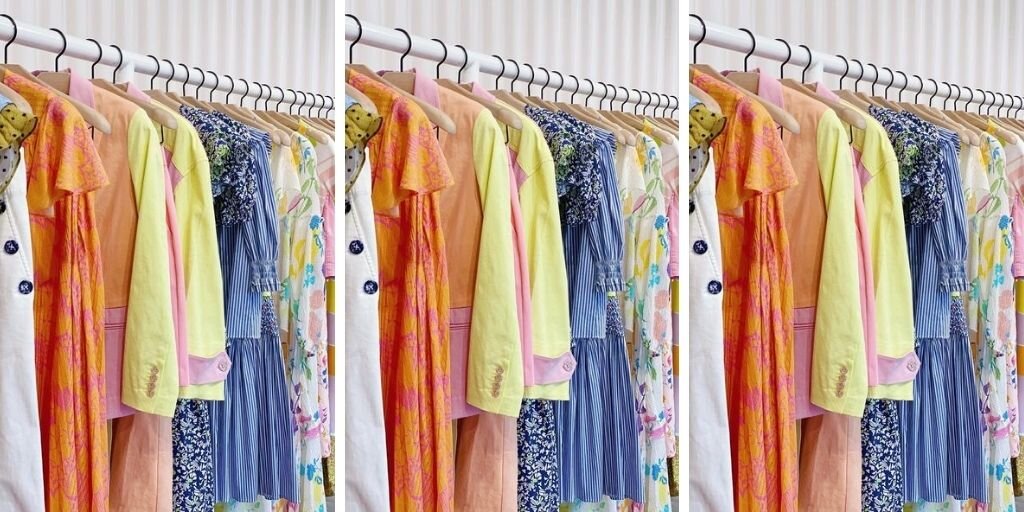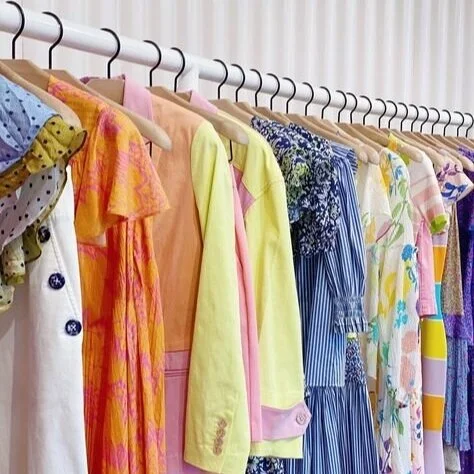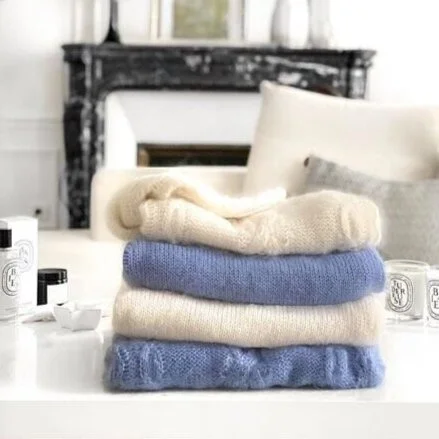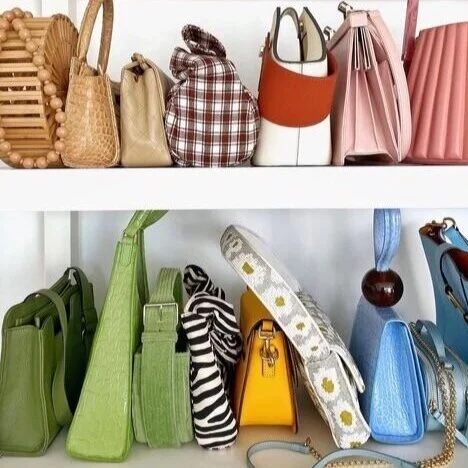Has spring sprung where you live? The calendar says that spring started weeks ago – but your weather may not. But at some point soon, you’ll want to trade your winter wools and chunky sweaters and boots for lighter weight fabrics and thin knits and slip on shoes. Is your closet ready for the transition to warm weather?
I’m not suggesting that you do a major overhaul to get your closet ready for spring – but what I am suggesting is that you make a few shifts so that it’s easier to get dressed for the season. Because transitioning your closet to spring is not only useful – it’s kind of necessary to get you ready for the warmer days ahead. Here’s why I recommend doing this kind of ‘seasonal swap’ twice a year:
Accessibility – getting your closet ready for spring isn’t about a giant wardrobe redo. But it is about making warm weather items easier to reach.
You wear what you see – so, if you can see your spring/summer clothes more readily, you’re more apt to wear them.
Less choices make getting dressed easier – by shifting your cold weather clothes to less visible locations, you’re narrowing down what you see in your closet on a daily basis. Which definitely makes outfit decisions easier.
What’s old feels new again – you know that spring sweater you forgot about? The cute dress that you didn’t remember at all? A bunch of things from last year may feel almost new, since you haven’t seen them for months – and that’s a great way to curb any urge to go shopping.
It’s the best time to purge your cold weather clothes – believe me, we all have things that we thought we’d wear over the fall and winter that we didn’t. So, now is the ideal time to review your cold weather styles to see how you feel about them - and if they deserve to be stored for next fall/winter.
So, how can you get your closet ready for impending spring and summer weather? It’s all about accessibility and visibility – shifting your warmer weather clothes to locations that are easier to reach and see. And conversely, moving your colder weather clothes to less visible and less accessible locations. Here are 5 quick steps:
TOPS
Flip lighter weight, short sleeve, sleeveless and other warm weather tops forward on the hangbars in your closet – and heavier weight styles back. If your tops are already separated by sleeve length, then you may simply be tucking your heaviest styles (wools, cashmere, thick fabrics) toward the back. And remember – this is probably a small subset of your tops, but it pays to get your seasonally appropriate styles front and forward.
If you’re doubting what’s more or less accessible in your closet, look at where your closet doors open first and where you reach for the most. And if you think your closet needs a bit more attention than a seasonal swap, read this article for 5 steps to a full closet detox.
OTHER HANGING STYLES
Once your tops are done, you can do the same thing for hanging pants, skirts, dresses, jumpsuits and third pieces. Move any warm weather specific styles to easier to reach locations, and any cold weather specific styles to less accessible areas.
And while we’re on the topic of third pieces – my advice is to keep all styles that are part of your outfits in your main closet (and move true outerwear pieces to another closet, if needed). This includes blazers, cardigans, denim jackets, moto jackets, etc. Basically, if you think about a specific third piece as an integral part of what you’re wearing, it should be with the rest of your clothes. And if you’re wondering what the heck I’m talking about with third pieces, click here to discover why I think a third piece is key to looking pulled together.
FOLDED ITEMS
If you have stacks of folded sweaters, sweatshirts and t-shirts in your closet, move the stacks of warm weather items into easier to reach locations, and cold weather things to less accessible areas. This would include your wool sweaters, sweatshirts you only grab in fall and winter, etc. And if you don’t have full stacks of warm vs. cold, simply move your lighter weight styles to the top of the stacks.
I don’t suggest keeping a lot of clothes in drawers (outside of pajamas, underwear and workout clothes). But if you do keep styles in drawers, my advice is to get your warm weather folded items into your closet and shift your cold weather folded things into your drawers. I did this for one client recently – when we first met, she was getting dressed from her closet, from her drawers and then grabbing a third piece from another closet. But by shifting cold weather styles out of her closet at the onset of spring, she was able to get completely dressed from her main closet – which was kind of a revelation for her!
SHOES
How you deal with shoes partially depends on how you store them. If you have a big walk-in closet where you can see everything, you may not need to do anything. But if you have a smaller closet, it pays to simply shift your boots and booties and any shoe styles that you won’t wear for the next several months to the deeper recesses of your shoe storage. And at the same time, pull your sandals and slides front and forward. If you’re contemplating what should be in your shoe wardrobe, click to see which heels I recommend to clients.
And if you have any other fall/winter accessories (heavy scarves, hats, etc.), now is a great time to get them out of the way for the season.
DON’T FORGET
Ok, so this isn’t necessarily a separate step – but I think it’s important enough to single out and reinforce from above. You just finished up several months of wearing cold weather clothes. So, now (not later) is the best time to review what you wore – and more importantly, what you didn’t wear.
Check your most worn items for stains, tears, damages and other things that need repair or cleaning before you store them away for the season. Because a little stain now can become a big problem later, and a missing button might be easier to find now than in October.
And you can probably guess what I’m going to say next. Carefully review anything that you barely wore or didn’t wear, to determine if it still deserves space in your cold weather wardrobe. Think though why you didn’t wear it (did you just not have the opportunity to wear it? or is it a bad fit? did you always choose something else that has the same function?). Decide whether it’s a keep, toss, donate or sell – and then follow through.
If you take the time to shift your closet (and review certain styles) twice a year, I can almost guarantee that you’ll have a keener handle on what’s in your wardrobe – which makes getting dressed easier, every single day. And it also curbs any unnecessary shopping.
And if you’d like a partner in the process of sorting through your closet to determine what should and shouldn’t be there, contact me to set up a free consultation. We’ll chat about your specific needs and how we can shift your closet from a source of stress to a fun place to get dressed.
Photo credits (from top to bottom): Tanya Taylor on Instagram, The Working Girl on Instagram, Wait You Need This on Instagram




